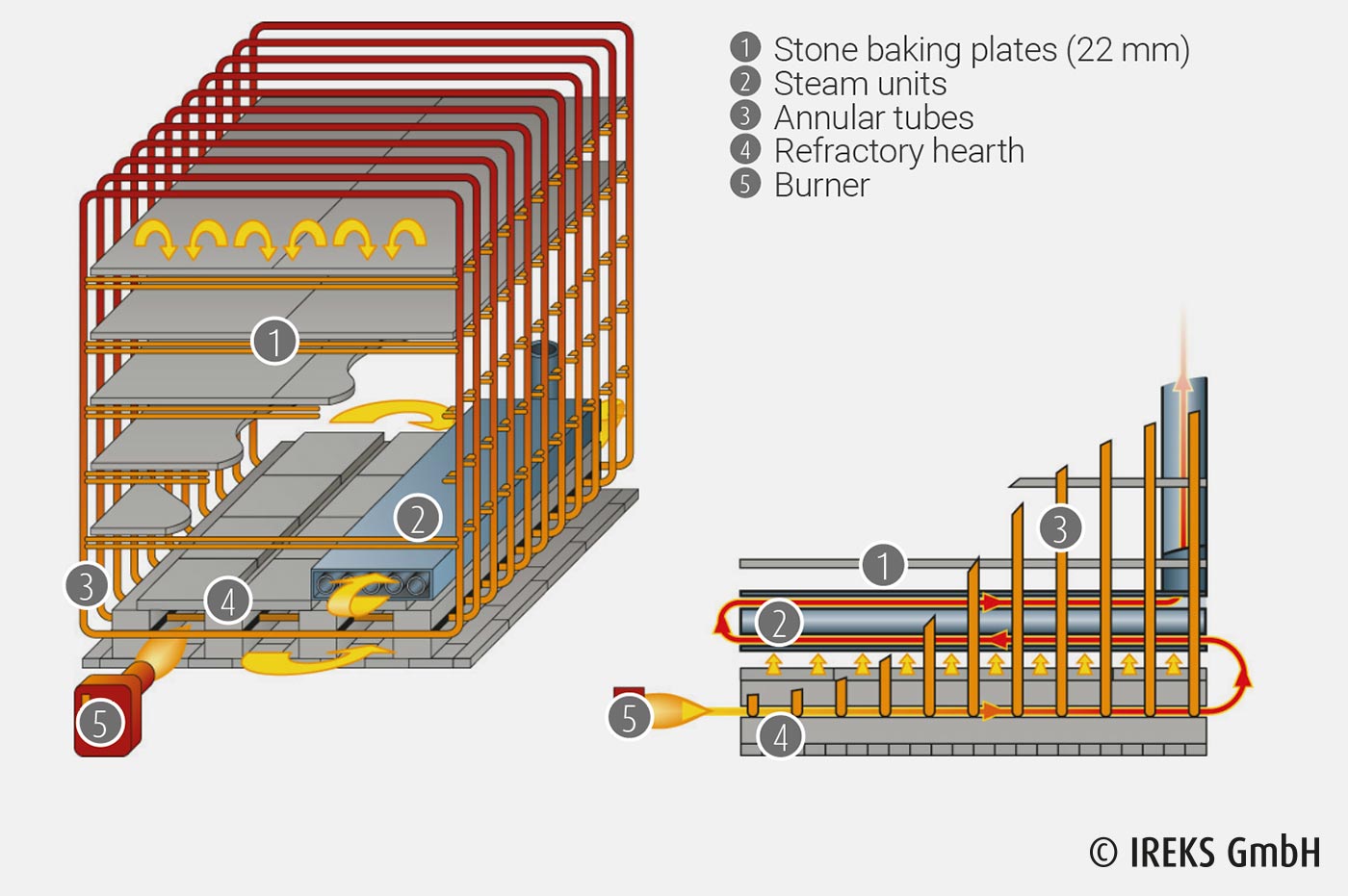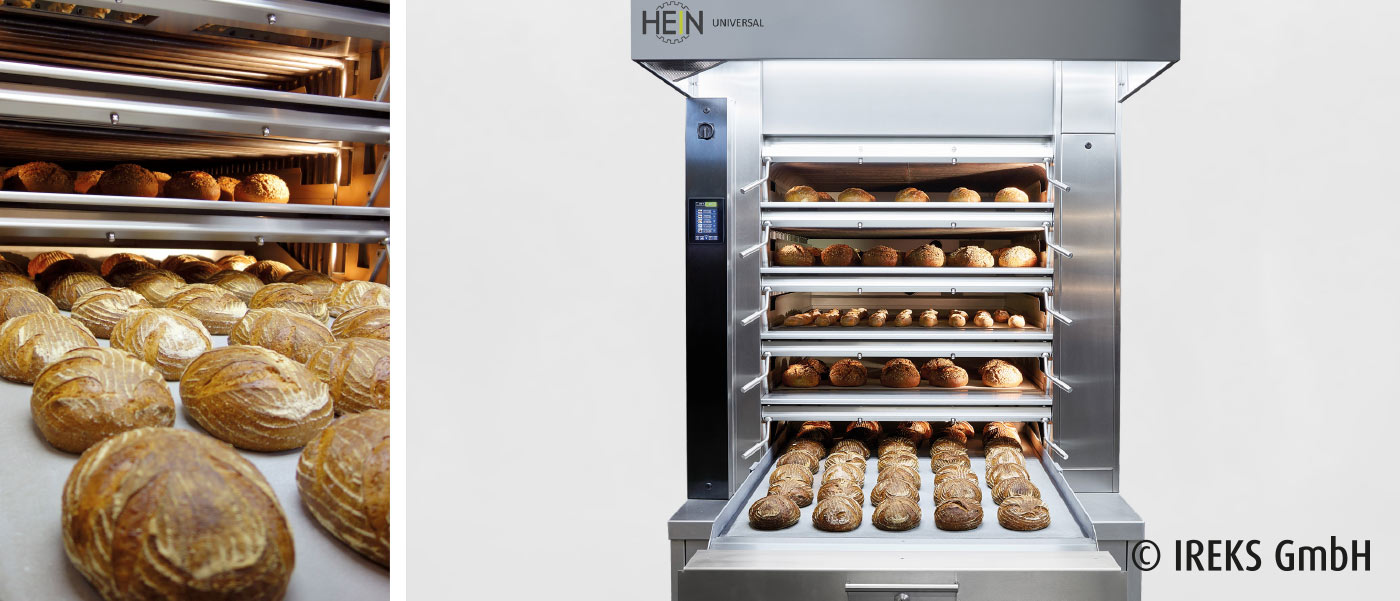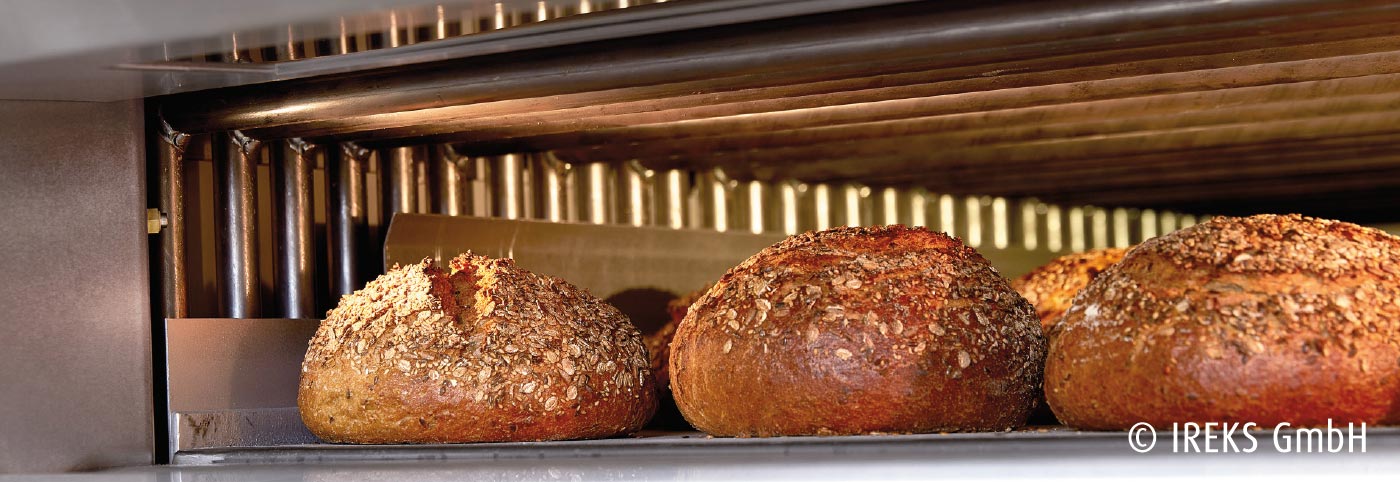In the case of a steam oven, water or steam are used as a medium for heat transfer. Here, the water is in closed pipes, Perkins pipes, which are named after their inventor, Loftus Perkins. These pipes are partly filled with water and one end of the pipe juts into a heating chamber, where it is heated by a flame.
As fuel, wood, coal, oil or gas can be used. The other end of the pipe reaches into the baking chamber, whereby the pipes slope slightly into the firing chamber. The end of the pipe is heated in the heating chamber and steam appears in the pipes with a temperature of up to 300° C. The steam rises and heats the pipes in the upper section, where they jut into the baking chamber. By the release of heat, the steam condenses and the condensate flows back to the bottom end of the pipes where it is evaporated once again. As an oven with indirect heating technology, the steam baking oven was a revolution in the 19th century in comparison to common and directly heated wood-fired baking ovens.
The steamtube oven, which is nowadays produced by manufacturers in Luxembourg and France, among others, is the further development of the steam oven. The closed steamtube system is set up as a rectangular cage here. Intermediate pipes are welded in the section with the individual decks, providing the individual decks with top heat and bottom heat. The heating chamber is found in the lower section of the oven, where the pipes are heated and the water evaporates. As with the original steam oven, the energy transfer takes place via the condensing of the water into the decks in the upper section.
As a result of the low emission temperatures and doing without devices using electricity, such as pumps or convection systems, steamtube ovens are viewed as saving energy. Similar to thermal oil ovens, the baking behaviour of steamtube ovens is very constant, a soft heat is spoken of “without flames”. Due to the style of construction and the heating principle, all the decks of the oven have the same baking temperature during operation. As a result of the gentle heat, it is still possible, nevertheless, to bake different products such as tin bread and croissants at the same uniform temperature.
Steamtube ovens have a very good heat storage capacity which makes it possible to bake products consecutively without long periods of subsequent heating. But this also brings a relatively lethargic temperature behaviour and has an effect if the temperature has to be changed (Hein S.à r.l. 2020; cf. Baker Perkins Historical Society 2018; Schünemann et al 2016).



